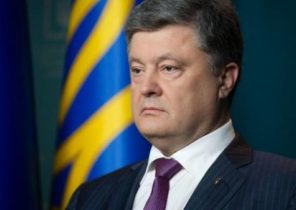The melting of Arctic ice caused by global warming will contribute to the development of the region. As a country that occupies most of the coastline of the Northern ocean of the Earth, Russia is interested not only in natural resources in the region, but also in the creation of new trade routes. For that purpose began the construction of a very large and powerful nuclear-powered icebreaker in the world, which will provide year-round navigation of merchant vessels in the Arctic.
Work on the construction of the vessel began in July of this year, the plant “Zvezda”, located on the shore of the Pacific ocean in the city of Bolshoi Kamen in 30 kilometers from Vladivostok on behalf of the President of Russia Vladimir Putin. The contract between the consortium of companies, led by oil company “Rosneft” and company “Rosatomflot”, which belongs to the Russian nuclear Agency Rosatom, was signed in April last year.
The new vessel, which some analysts called “the floating city”, has a length of over 200 meters. It will be called “Russia”, and according to the classification but refers to the new type of icebreakers under the name of “Leader”. All these facts characterize the most powerful in the history of the icebreaker.
“Another such in the world,” prides General Director of “Rosatomflot” Mustafa Kashka. In addition to its impressive size (209 metres in length and 47.7 meters wide), “the ship has exceptional performance characteristics that will provide year-round navigation in the Eastern part of the Arctic ocean”.
Navigation will be provided, even if the ocean would not thaw, because “Russia”, the “leader of the Arctic”, will be able to break up the ice layer of more than four meters. In motion it will allow the two nuclear reactors RHYTHM-400. A ship with a displacement of 70 thousand tons capable of speeds up to 22 knots. The project Leader represents the next generation of Russian icebreakers. With the release of the icebreaker “Russia”, scheduled for 2027, the Northern sea route (Sevmorput) will be open during the whole year.
After the construction of “Russia” it is planned to build two more ships with the same characteristics, the construction of the last of them will be completed by 2033.
In December last year at the forum “Arctic: present and future”, the Deputy Minister of development of Far East and Arctic Russia Alexander Krutikov said that by 2035 the expected volume of traffic on this route will be 160 million tons. For comparison: in 2018, the traffic volume was 19.7 million tons. Russia plans to make the Northern sea route international. In addition to the icebreakers of the class “Leader”, the development plan of this road also involves the construction of smaller nuclear-powered icebreakers, such vessels of the project “Arctic”, as well as oil and gas tankers. In 2019, Putin said that by 2035 Russia will be thirteen heavy icebreakers, nine of which will be nuclear. Today Russia is the only country in the world that has atomic icebreakers, so that she has more attention in the Arctic.
“Thanks, “Russia” and two other vessels of the Northern sea route will be cost-effective and affordable for carriers,” — said the Deputy Director of the Center for analysis of strategies and technologies, Konstantin Makienko. This will be possible because the new icebreakers will be able to lay a channel in the ice up to 50 meters, sufficient for the navigation of large vessels. According to experts, the construction of the icebreaker will also be a stimulus for Russian manufacturing and industry, because “it is innovative and involves the development of high technology to ensure the improvement of shipbuilding”.
“Russia” and other ships of the project “will make possible year-round navigation along the Northern sea route commercial speed in 10-12 knots,” — said General Director of the plant “Zvezda” Sergey Tseluyko after signing the contract for construction.
The Northern trade route considerably shorter than the routes linking Europe and Asia through the Suez canal. Thanks to it the transport company will be able to save time and transportation costs. Some countries — importers of Russian liquefied natural gas from the Arctic are particularly interested in the project. These include South Korea, Japan and China.







